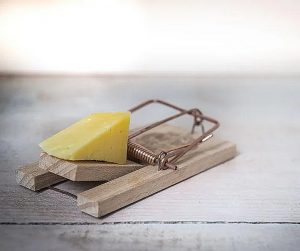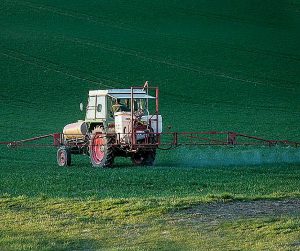Advantages And Disadvantages Of Mechanical Pest Control: Gardeners are looking for ways to raise healthy crops while also maintaining the fragile ecosystems in their own backyards, with the emphasis on environmental and health issues these days. When insects or other pests infest the garden, these goals may appear to be at odds.
There are occasions when a gardener will need to use pesticides to control an infestation, but there are also many non-chemical options. Some of these options fall into the mechanical (or physical) controls group. For small gardens, mechanical controls are usually more feasible, and they can be used separately or in combination.

Recommended: Most profitable skills to learn in 2022
Mechanical Pest Control
Here, Hands-on techniques, as well as basic equipment, technologies, and natural materials, are used to create a protective barrier between plants and insects.
Exclusion devices used in mechanical pest management include row coverings, nets to keep birds away from ripening fruit, paper collars around plant stems to prevent cutworm damage, and appropriate fence or barriers to halt the spread of bermudagrass or keep dogs and wild animals from ruining through the garden.
Recommended: Advantages and Disadvantages of Technology in Agriculture
Use of Rows
Row covers are woven or plastic materials that are flexible, translucent or semi-transparent, and are used to wrap single or several rows of plants. They serve a variety of purposes: boosting soil and air temperature, decreasing wind damage, and providing a physical barrier to defend against insect pests to improve crop growth and early production.
ADVANTAGES
Row coverings have several advantages as physical barriers,
1. They are non-toxic and leave no residue.
2. Water and air can travel through woven and porous or perforated plastic covers, while sunlight can penetrate through all row covers.
DISADVANTAGES
1. Row coverings, on the other hand, can be time consuming, especially in windy places.
2. Physical obstacles may also inhibit insects from pollinating fruits and vegetables. Gardeners must erect the barriers during flowering season to allow pollination.
3. Pests that emerge from the soil under row coverings to attack plants may find physical barriers ineffectual. Gardeners should be cautious about burying plant detritus under the planting row or bed, as pests commonly overwinter in such material.
Also see: Difference Between Reward and Incentive (With Examples)
Use of Traps and Attractants
Mechanical traps and attractants are used in the garden for two purposes: to trap enough insects to reduce crop damage, and to monitor how many and what type of insects are present. Food, shelter, and reproduction are all important needs for insects, and traps and attractants cater to these needs.

A sticky barrier, which may be placed on the trunks of trees and woody plants to prevent crawling insects from inflicting damage, is one sort of mechanical trap. The “shingle trap,” in which shingles are placed beneath plants to attract squash bugs, is another example of a mechanical trap. The gardener removes and destroys the pests by lifting the tiles on a regular basis. It’s made up of adhesive paper that’s attached to stakes.
ADVANTAGES
1. The sticky substance that attracts the insect, for example, attracts insects because of its color or a sex pheromone in the paper. Yellow sticky traps seem to attract more insects than other colors.
DISADVANTAGES
Traps or attractants have the disadvantage of trapping beneficial insects. Furthermore, while some traps may be created at home with simple, low-cost materials, others are more expensive and must be cleaned or updated on a regular basis.
Recommended: Top 10 most beautiful animals in the world
Handpicking method
Insects and egg masses can be destroyed or removed by hand for immediate and effective control. Squash bugs, hornworms, and bean beetles all feed on the leaves, thus this strategy is extremely successful.

ADVANTAGES
1. Handpicking is the least mechanical control method as well as other organic methods, excluding manpower.
DISADVANTAGES
Handpicking also has drawbacks in that;
1. It must be done long before insect harm is visible and at a critical time in the insect’s development. Scouting, an Integrated Pest Management method, comes in handy here. Before bug populations become too high, gardeners must actively monitor their crops, looking for the first signs of harm.
Also see: Difference Between College and University
Water Pressure Sprays
A strong stream of water can sometimes dislodge insects like aphids and spider mites from plant stems and foliage.

ADVANTAGES
1. It is a very effective method and can be used to dislodge insects like aphids and spider mites.To avoid plant damage, only use high water pressure on strong plants.
DISADVANTAGES
1. Because many of the insects are likely to return, this procedure must be repeated.
2. This strategy could potentially be problematic because frequent water treatments can promote illnesses like black spot on roses or cause root difficulties if the soil is already excessively wet. As a result, utilize water sprays in the morning to ensure that the plants dry out over the day.
Recommended: Most Famous People in the World 2022: Top 10 Popular
Use of Diatomaceous Earth
Diatomaceous earth is made up of finely powdered ancient diatom bones. Sharp edges of crushed diatoms puncture soft-bodied insects’ waxy or oily exterior covering, causing them to dehydrate and die.
Diatomaceous earth is classified as a mechanical pest control since it works by scratching the insect’s outer body covering. Some insects will not crawl on or feed on plant leaf dusted with it, hence it may be considered a mechanical barrier or repellant. Diatomaceous earth is a dusty substance that resembles flour. There are several formulations available, including one offered for swimming pool filters, that do not assist control insects since the material has been transformed by high heat to make it a stable filter material rather than an absorber of insects exterior.
ADVANTAGES
1. It’s classified as a pesticide, yet it’s harmless to birds and mammals.
DISADVANTAGES
Diatomaceous earth, on the other hand, might be a drawback because;
1. It can harm beneficial insects like ladybugs and
2. It is less efficient against pests in humid weather.
Recommended: Advantages and Disadvantages of being a teacher

Insect Vacuums
Vacuums are becoming increasingly popular among commercial producers for removing certain sorts of insects from plants. These devices may incorporate a disposable cartridge filled with a non-toxic, sticky gel to trap insects sucked up by the machine. In commercial production, large vacuum equipment is attached to and operated by tractors.
Battery-powered hand-held vacuums, some of which have a small hose adapter for reaching across a row, are available on a smaller scale. Shaking a plant can disperse flying insects like thrips and whiteflies, as well as aphids in their flight stage of development. The insects can be sucked into the vacuum hose that is retained in place when the plant is shaken and the insects take to the air.
ADVANTAGES
1. Vacuums can also be used to get rid of crawling insects and insect eggs.
DISADVANTAGES
1. Plants with strong or thick leaves can be vacuumed immediately, while plants with sensitive foliage should be handled with care, otherwise, it will damage the crop.
Also see: Advantages and Disadvantages of Medical Technology
Horticultural Oils
Oils are petroleum-based compounds that build layers on plant parts to smother insects or provide a mechanical barrier to prevent damage. Growing season (summer) and dormant oils are the two types of oils.
ADVANTAGES
1. It is a very effective mechanical method of pest control
DISADVANTAGES
2. Cannot be used when the temperature rises above 90°F.
Recommended: Major Classifications of food
Conclusion
Pests, whether they are insects, weeds, or something else, are inconvenient. More than that, they have the potential to wreak havoc on the world’s ecosystems and agriculture by upsetting the delicate balance maintained by natural diversity (or the intentional lack thereof) of species.
As a result, all of these pests must be controlled using methods that are less damaging to humans and beneficial insects. This is met via mechanical pest control. Furthermore, the key advantages of mechanical control strategies are their simplicity and low cost, with minimal drawbacks as long as these tactics are compatible with a farmer’s other management goals.

Edeh Samuel Chukwuemeka, ACMC, is a lawyer and a certified mediator/conciliator in Nigeria. He is also a developer with knowledge in various programming languages. Samuel is determined to leverage his skills in technology, SEO, and legal practice to revolutionize the legal profession worldwide by creating web and mobile applications that simplify legal research. Sam is also passionate about educating and providing valuable information to people.
